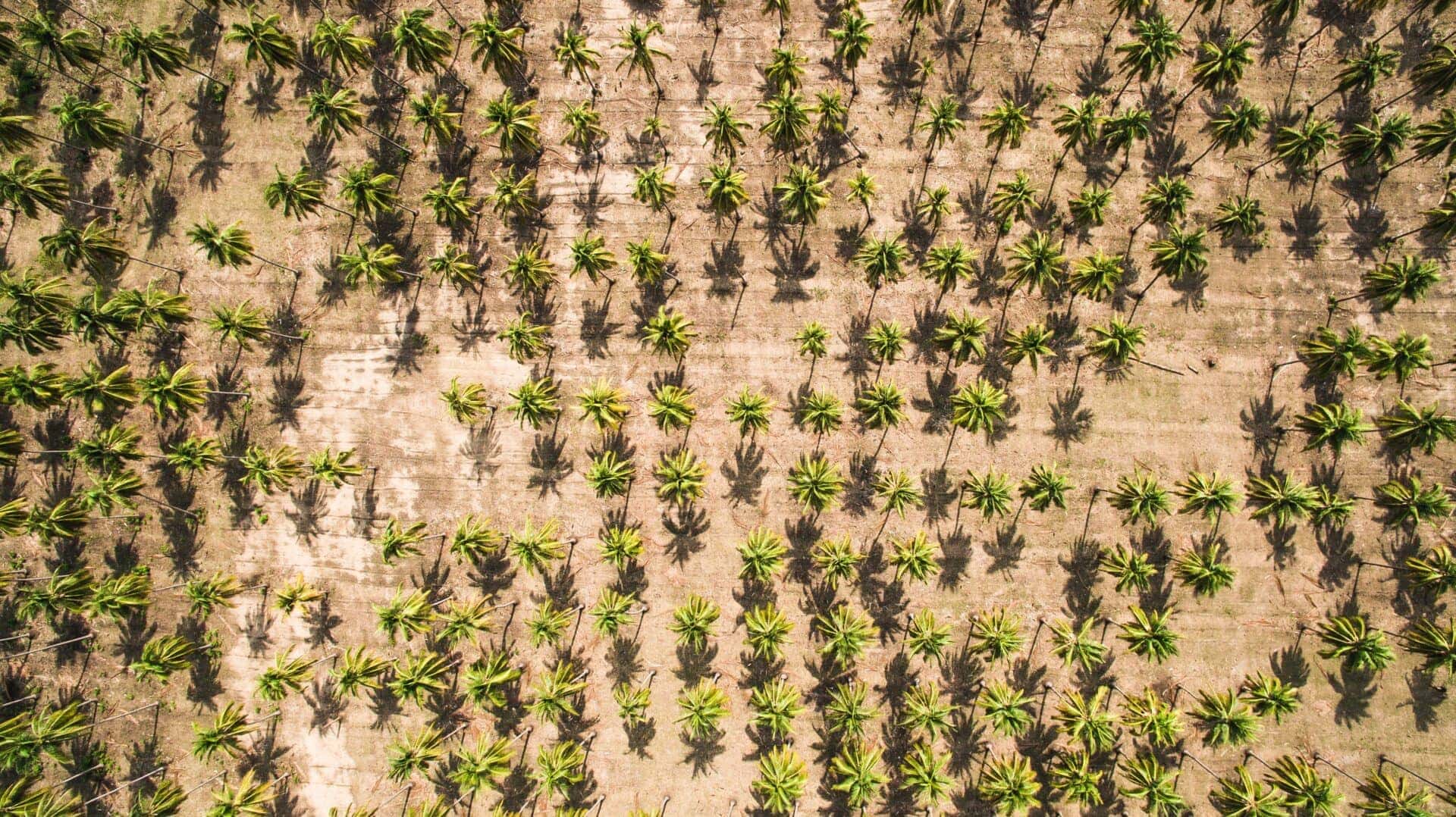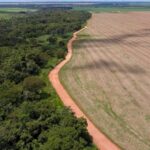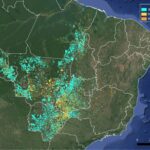Deforestation: is there too much focus on palm oil?

This piece is an op-ed by AidEnvironment palm oil expert Chris Wiggs
Last week, I participated in the Innovation Forum webinar “Deforestation: is there too much focus on palm oil”. This piece is my own selection of highlights from the discussion and reflection.
COP26 underscored the urgency of halting deforestation in commodity supply chains. While palm oil companies are considered ahead of other sectors in no-deforestation implementation, AidEnvironment uncovered that non-palm deforestation persists in sustainable palm oil supply chains because of limitations in the scope of companies’ policies. With Innovation Forum, I was joined by speakers from Sime Darby Plantation, Proforest and World Conservation Society to discuss and debate:
- Why a focus on palm oil has meant that other deforestation risks haven’t had the profile they perhaps should,
- The critical challenge of “leakage” in terms of where deforestation risks are in value chains,
- Examples of the risks commodity buyers need to look for in non-palm supply chains.
The problem of focusing only on palm oil
The AidEnvironment research that prompted the discussion revealed that 133,000 hectares of deforestation was committed by industrial tree companies in Indonesia and Malaysia between 2016 and 2021. These same companies are business partners of palm oil refiners that require no-deforestation for palm oil purchases, but do not apply the same sustainability standards for other commodities.
This means that in some of the same landscapes that comply to No Deforestation, No Peat, No Exploitation (NDPE) standards for oil palm, a neighboring forest is being cleared by the same company for timber. These deforesting companies then supply palm oil to the world’s leading traders/refiners and consumer goods companies – including Wilmar, Bunge, Cargill, Avon, Colgate-Palmolive, Danone, Friesland Campina, General Mills, Johnson&Johnson, KAO, Kellogg’s, L’Oreal, Mars, Mondelēz, Nestle, P&G, PepsiCo, PZ Cussons, Reckitt Benckiser, Hershey, and Unilever. While these palm oil buyers have NDPE commitments, how can the presence of a deforesting company in its NDPE supply chain be justified?
Cross-commodity approaches are needed, but challenges are complex
At the Innovation Forum panel, we all agreed that there is too much focus on palm oil and a broader approach is needed. Perspectives from the discussion made for a promising path forward:
- The viability of a cross-commodity NDPE policy comes down to the question of leverage and implementation, said Mark Wong of Sime Darby Plantation. Palm companies such as Sime Darby now engage on a company group level, which means monitoring and engagement go beyond the direct mills and purchase volumes involved. “To extend this to affiliated companies in other sectors – mining, pulp and paper – requires a lot of resources, and it’s questionable whether it can be done well,” he said.
- We also recognize that the palm oil sector has become a victim of its own success. These companies being asked to adopt wider reaching policies is a failure of other sectors.
- A lot can be learned from the palm oil sector. Matthew Leggett of Wildlife Conservation Society points to traceability and transparency, the inclusion of smallholders and plasma farmers in interventions, and bringing in other stakeholders as success factors in palm sustainability. He emphasizes investments made by palm companies and how other commodity sectors need to make the same commitment.
- Meanwhile, work in palm oil isn’t done. Mark Wong of Sime Darby concurs that palm companies can help drive dialogue on a landscape level, while recognizing that the same approach of using traceability and monitoring will not necessarily work for each landscape.
- NGO activism was and remains a catalyst for the sustainable transformation of the palm oil sector. Ruth Nussbaum of Proforest suggests the need for positive feedback beyond “name and shame” approaches to keep making strides forward. We can do better in recognizing progress made as well as sustainability leaders that chart this path.
We discussed a wealth of other subjects, including the role of governments and finance, the issue of shadow companies, biodiversity loss, the need to protect the rights of indigenous communities and smallholders, and compensation and restoration for historic forest loss. I invite you to view the recording and comment with your own thoughts.
Our take: palm oil companies can achieve much more with their existing resources and leverage
The first point I’d like to make is no-deforestation that applies only to palm oil is inconsistent with NDPE policies. Although management structures within companies may differ depending on commodity, company groups are considered a single entity because they are ultimately controlled by the same people. Allowing a company and its ultimate beneficial owner to actively clear forests while profiting from access to an NDPE supply chain, simply because the deforestation is for a different commodity, is inconsistent with this company group approach. It also undermines the whole ethos of NDPE policies.
It also makes little sense on a landscape level. AidEnvironment’s analysis of Indonesian and Malaysian forestry permits indicates the industrial tree sectors are the second largest plantation sectors in their countries, after palm oil. As well as ownership overlaps, oil palm and industrial tree plantation permits also operate in the same landscapes, often side by side. Limiting a policy at commodity level ignores that this deforestation is often occurring in the same landscapes, in the same cultural, political and economic context.
Finally and most importantly, cross-commodity NDPE policies can save standing forests. AidEnvironment’s report shows that the seven deforesting Indonesian companies still have 373,000 hectares of intact forests inside their concession areas, much of it are the habitat of the Critically Endangered Bornean orangutan. Companies in the palm oil sector are also currently discussing the most appropriate mechanism to recover degraded landscapes as a way of offsetting oil palm deforestation liability. Recently launched initiatives include Lestari Capital and the Forest Conservation Fund. For any of these initiatives to actually restore degraded landscapes, they must be embedded within the entire landscape, not just one sector that operates in it.
NDPE policies must take a similar approach. By including industrial trees in the scope of NDPE policies and applying the same pressure to companies deforesting for industrial timber as they would for oil palm, palm oil buyers could save more forests and contribute significantly to increased sustainability in Indonesia and Malaysia’s two most significant land-use sectors.
What is your take? We welcome other perspectives and ideas. Please feel free to reach out.



